Capital:
Buenos Aires
Currency
Peso
Best time to visit:
The best time to visit the northern part of the country is from September to November; to visit Patagonia, on the other hand, the Argentine summer is more suitable (from December to February). Those who aim to ski, on the other hand, will do well to plan their departure between mid-June and mid-October.
In a word:
Que tal? (how is it going?)
Vaccines
None
Warnings:
- Malaria is present in rural areas along the borders with Bolivia and Paraguay even if the risk is minimal
- Protect yourself from mosquitoes because there is also the risk of contracting dengue.
At the table:
The famous Argentine beef can only be a revelation for meat lovers. Argentine cuisine is heavily influenced by Spanish and Italian cuisine. Normal portions are usually generous and enough to satisfy two people. Don't miss the stalls selling dulce de leche sweets (caramelized condensed milk) and exquisite ice creams.


Essential experiences:
Conquer the southernmost point in the world (Ushuaia); Be enchanted by the majesty of Iguazu Falls in the heart of the northern subtropical forest; Admire sea lions in the Peninsula Valdès Wildlife Reserve, where southern right whales can be spotted from June to December.
When you think about what to do and what to see in Argentina, you are spoiled for choice. The South American country is immense and offers many attractions for visitors: from the refined capital Buenos Aires to the boundless Patagonia, from the alpine mountains of Bariloche to the lunar ones of Salta, from the immense vineyards of the Mendoza area to the magnificent historic center of Córdoba, from the spectacle of whales off the Valdés peninsula at Iguazu Falls from where we begin this wonderful journey.
How did we organize this trip?
After visiting the Iguazu Falls, we reached San Carlos de Bariloche, hired a van and headed slowly to the southern hemisphere.
In the more than 4000 km, which lead from Bariloche to Usuhaia through the Carretera Austral and the Ruta 40, the idea of 'travel' is fully savored.
It is a very intense journey where you have to study the itinerary carefully.
A fascinating journey from north to south dedicated to the great spaces of Patagonia, its magnificent National Parks up to the crossing of the Strait of Magellan before seeing the bay of Ushuaia, with the southernmost city in the world, hopping between Argentina and Chile!
We fly to Buenos Aires, the "Reina del Plata", the world capital of tango, a city that is an alchemy of Parisian architecture, Roman traffic and Madrid nightlife but with a South American touch!
Our suggested itinerary (23 days) | |
three days: | Puerto Iguazu (visit to the falls) |
five days: | San Carlos de Bariloche, Los Antiguos (visit to Lago Argentino), Las Cuevas de las manos (visit to the caves) |
ten days: | El Chalten (trekking to Laguna de los Tres and Fitz Roy), El Calafate (navigation to the Perito Moreno), Ushuaia (navigation along the Strait of Magellan and the Beagle Channel and trekking to Isla Redonda) |
five days: | Buenos Aires (city tour) |
On the border between Argentina, Brazil and Paraguay there is an entire region where water is the absolute protagonist: an expanse of 275 waterfalls generated by the great river, listed by UNESCO as a World Heritage Site. Iguazu National Park is one of the wonders of South America.
I stopped on a hill where I had a view of all three of these countries.
Here Iguazú River draws a curve and plunges 75 meters as if collapsing on itself, creating a unique setting that will remain etched in your mind.
We decide to go into the forest with a huge open truck and, while we follow those small red sand paths, conquered after fighting with nature with machetes, I thought about how difficult the journey had been following the equator described by South African Mike Horn…
After a long journey we arrive at a pier and from there ready for a rafting up to the Iguazu falls!
Walk along the numerous trekking paths that allow you to reach various panoramic points.
Our tour continues towards all the waterfalls with jumps of the most disparate names: dos hermanas, Borsetti, tres mosquetteros, la ventana; The most impressive sight is the Garganta del Diablo (Devil's Throat), the highest and deepest waterfall as well as a national symbol: the power and the roar of the jump convey all the power of nature.
That immense mass of water that from various streams, small rivers flowed slowly and calmly and then suddenly jumped off the rocks, from that high jump making that waterfall: majestic! That perpetual noise that never left you, those splashes of water that slapped you.
I saw people praying in front of the waterfall, others admiring it with shining eyes, others lost in their own thoughts ...
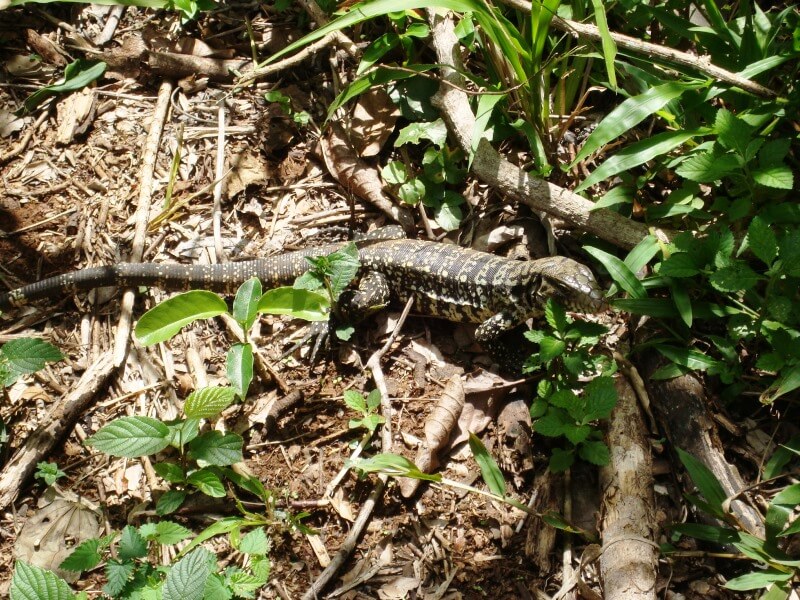


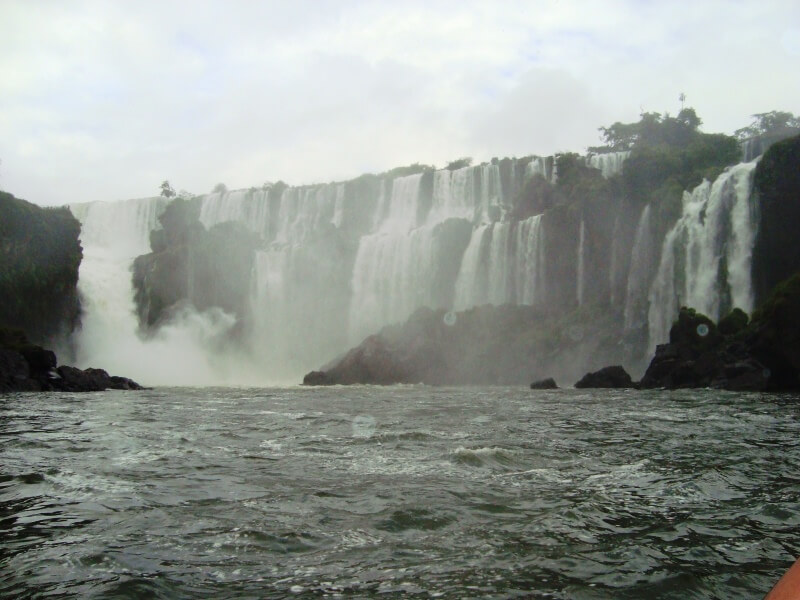
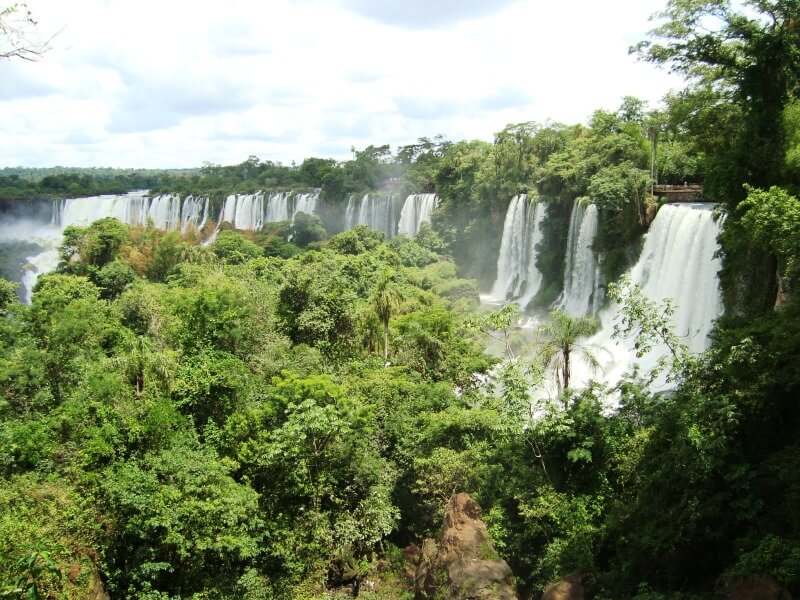
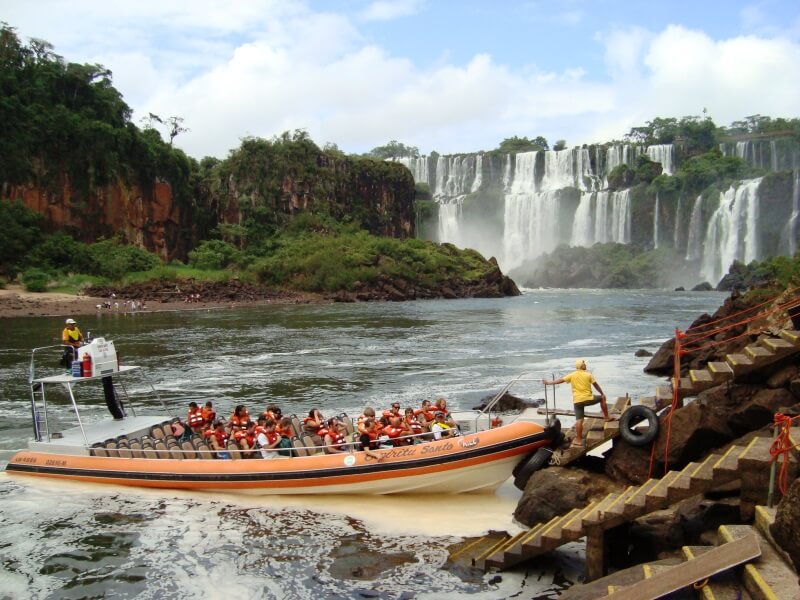

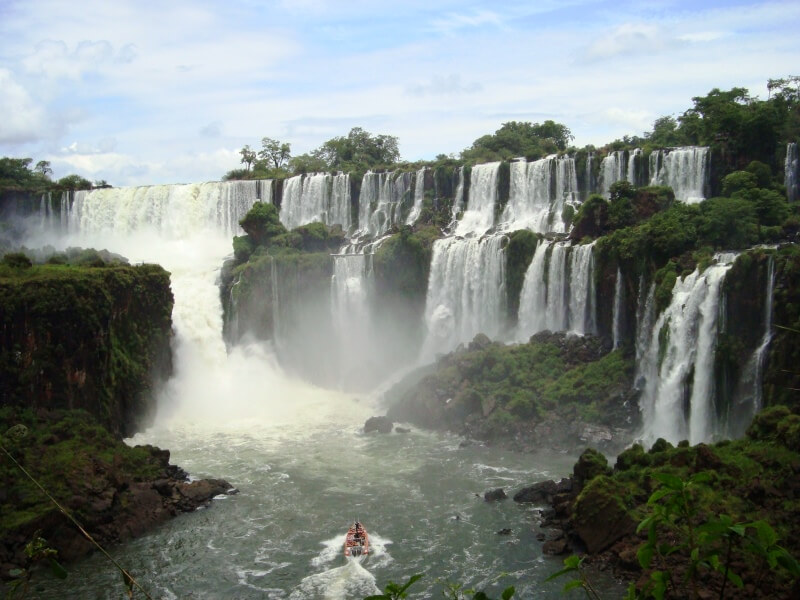
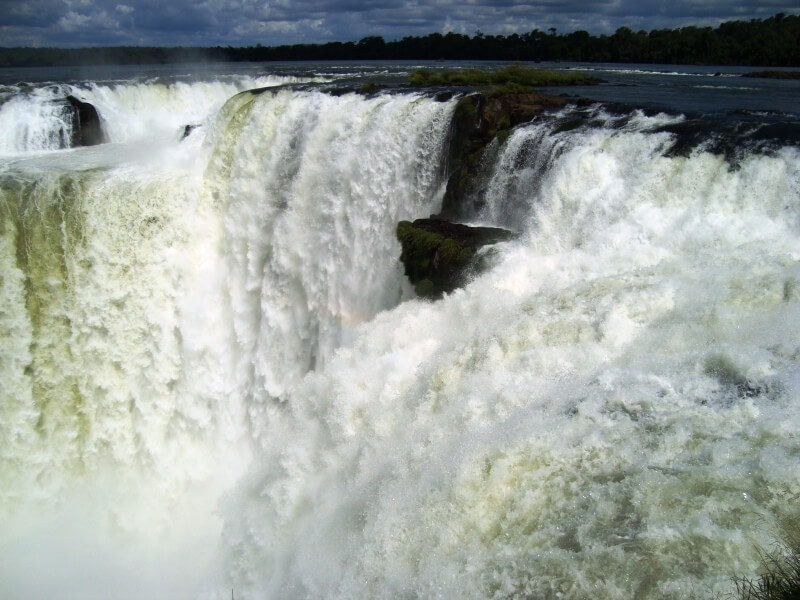
By plane we reach San Carlos de Bariloche, known simply as Bariloche, which stands on the shore of Lake Nahuel Huapi at the foot of the Andes, in north-western Patagonia, and is the largest city in the Lakes Region.
Immersed in a wonderful typically alpine mountain scenery, it is a renowned tourist destination that attracts visitors from all over the world.
Here you will always find something exciting to do, in any season of the year: in winter you can ski on the snow of Cerro Catedral, in the warm months you can go trekking, fishing, rafting, canoeing, cycling and horseback riding.
Bariloche has a curious history. Initially born as a center for the trade of skins and livestock between Chile and Argentina, in the 1930s it was rebuilt inspired by the architecture of the Alps, with wooden and stone houses, so much so that it earned the nickname "Switzerland of the Andes" . Walking through the center you will see buildings such as the Centro Cívico and the Neo-Gothic cathedral of Our Lady of Nahuel Huapi, and you will really feel like you are in a European village.
Sitting on a chairlift, we reach a viewpoint that shows us the whole area that is hosting us these days.
Wonderful! Postcard show ...
Lakes, pines, towering mountains with snow-capped peaks: the Andes!
You feel so small in the presence of the immensity of nature ...
Traveling along the Ruta 40 you enter and exit between Argentina and Chile because there are many places to visit and it often happens to find yourself blocked at the various customs borders.
From San Carlos de Bariloche we enter Chile for the first time and, a week later, we are back at the first Argentine village we meet and where we prefer to stop for the night, we are in: Los Antiguos, narrated even by Sepulveda in his Patagonia Express.
The village is really quiet, perhaps too quiet, what better way than a relaxing day on Lake Buenos Aires?
Wake up at dawn. Today another 800 km await us and with these bad roads it is quite challenging ...
Third consecutive day of transfer, we are very tested loves it's okay… We have grinded hundreds and hundreds of km. We saw both sunrise and sunset from our seat ... Patagonia never tires you ...
The landscape changes completely: canyons, immense dry grasslands populated by guanacos, rheas, wild horses and some armadillos ...
Along the way we stop to visit “Las cueva de las manos” (the caves of the hands), it sounds like the title of a horror film instead they are inscriptions and cave drawings dating back to 8000 years ago that portray hands, guanacos etc.
While my gaze is lost along the immensity of those landscapes, I imagined primitive hominids wandering around that place that has remained so perfectly intact for millennia and I would not have been absolutely surprised if a dinosaur had suddenly appeared ...
... and finally, after three long days of arid, dusty and lunar landscape interrupted only by the fleeting encounter of a herd of horses with their gaucho or some small group of free guanacos, here, before our eyes, the sun setting right between those snow-capped peaks that we are going to climb in the next few days! We are in El Chalten!
Here we are in El Chaltén, a mecca for trekking lovers and gateway to the two granite giants of Cerro Torre and Fitz Roy, it is considered the Argentine capital of trekking because from here a dense network of paths leading into the fabulous scenery starts. of the Los Glaciares National Park, between lakes and glaciers.
It is a small mountain village lost in nowhere at the foot of the Andes, and over two hundred kilometers from the nearest town (El Calafate). It is a quiet place inhabited by a handful of people, made up of colorful houses and dirt roads.
Tactical backpack: ready.
Food: prepared.
At dawn we set out to conquer the Laguna de los Tres, at the foot of Mount Fitz Roy (3780 meters).
Seven hours and 48 minutes of walking, suffering and fatigue but how wonderful ...
Along the beginning of the path, Luca and I, we meet French, Austrians and Germans but, shortly after, we are completely alone with nature, fully immersed in and surrounded, I bow before the majesty of Mother Nature.
The rustle of the leaves moved by the wind, the birds that chirp harmoniously and undisturbed, the flow of some invisible stream and then the sound of our footsteps that, despite the difficulties, of the path go on ... no matter the time, the clouds: let's go ahead ... we ford little rivers, we walk on the shore of a magnificent pure lagoon where we fill up the water bottle ...
We get lost in the narrow streets created along rocks and bushes higher than us ... every now and then a wooden bridge appears built with a single tree trunk ...
We are amazed at every little beauty that nature shows us ...
Sometimes we stop and look around astonished and always amazed ...
We continue and suddenly a white clearing appears before our eyes formed by the trunks of trees without foliage, like the back of a porcupine ...
We have to move on, the hard part is yet to come ...

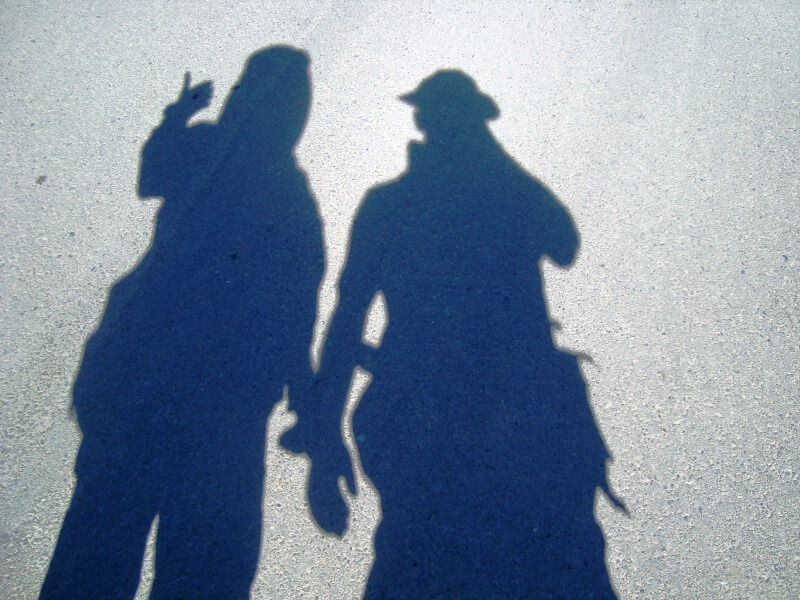

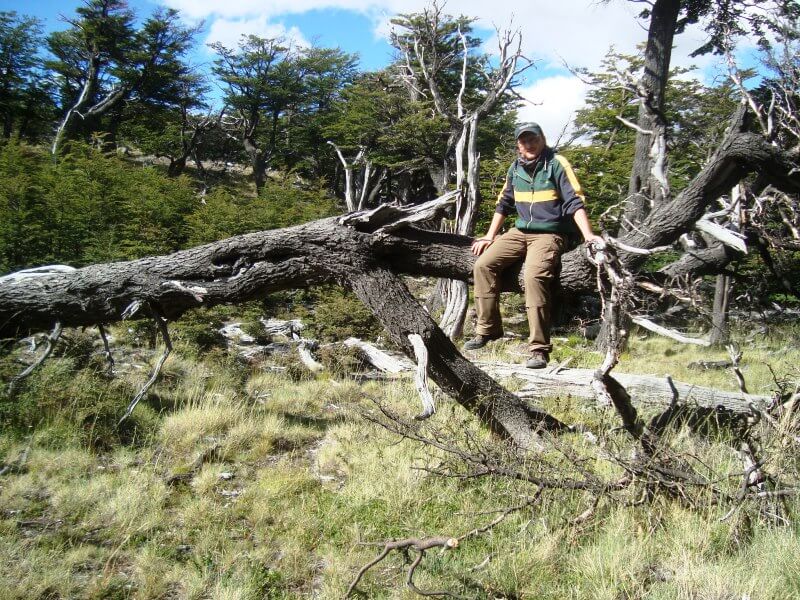


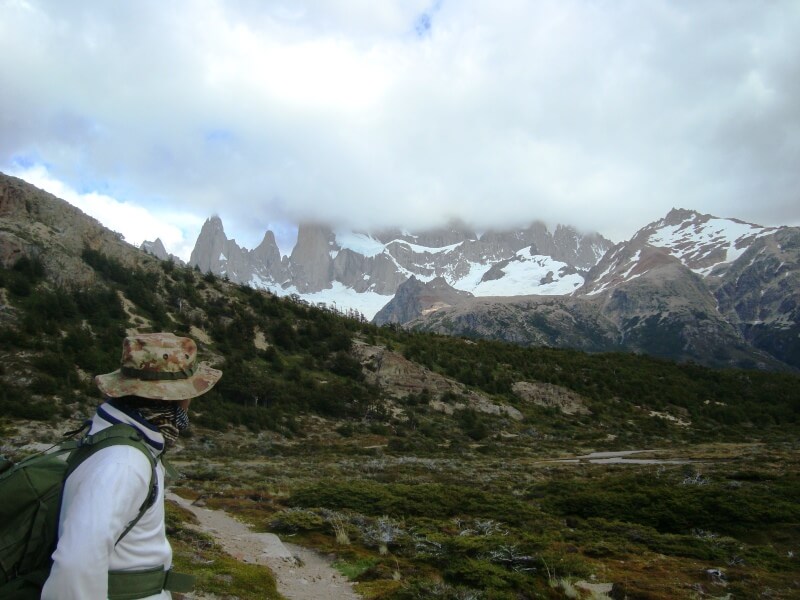
The Fitz Roy is covered by the clouds that move menacingly towards us ...
The wind begins to make itself felt, the sky becomes more and more leaden and the altimeter of my watch informs us that we are climbing more and more but the idea of giving up and going back does not even touch us ...
The hard part begins, the so-called "stony ground", a difference in height of 400 meters ... It should be the last obstacle to our finish ... We meet various trekkers who come down, first three Americans, then a Brazilian, various Argentines, four Israelis and all give us different information ...
We are the only ones to go up despite everything ... We encourage each other and continue while our breath increases ...
Last effort ... Luca stops on a rock to rest ... "Last shot ... it's over!"
Yet another spectacle of nature, a celestial lake at the foot of Fitz Roy still covered with clouds ...
We find refuge behind a large boulder to eat a sandwich and some dehydrated fruit ... Luca has suddenly recovered all his energy and heads alone to the frozen lake ...
I see him fill his bottle in the pure water of the lake ... We look around again always amazed as the first time, we eat an energy chocolate bar while the drops of water blown by the wind whip our face ..
We look into each other's eyes, nod and leave ... we still have a very long stretch to cover ... The wet stony rocks are very slippery, the descent is also difficult ... But let's go on ...
After another couple of hours we stop to eat a hard-boiled egg and an apple, we are two trains running ... almost eight hours later: the colorful town of El Chalten is back again, emerging after all this green ...
What a wonder nature! How many times have I said it? There is no better way to appreciate her than by walking into her soul!
For anyone venturing to discover Patagonia, El Calafate is a must. Not so much for the town itself, which still offers travelers all the facilities and services they may need, but because it is the gateway to Los Glaciares National Park, where one of Argentina's most incredible natural attractions is located and South America: the Perito Moreno glacier.
It is about 80 km from El Calafate and can be reached comfortably by one of the many buses or by renting a car, an option that allows you to go and see it at less crowded times. Once you reach the viewpoint, you will not believe your eyes: the gigantic glacier juts out into the waters of Lake Argentino with a 5 km long wall and up to more than 70 meters high. The Perito Moreno advances two meters every day and from time to time huge blocks of ice come off the front and fall into the water with an impressive crash. You can spend hours and hours hypnotized admiring the show.
Note the innumerable shades of blue that Patagonia can offer depending on the light, the seabed, the sky, the clouds everything changes ... I am not exaggerating to say that it seems to be in that place they call: paradise
The Perito Moreno is immense. When the immense flakes of ice fall, you hear the roar of the eternal, you hear the breath of the world that creates tension and terror, because nature knows how to silence us in a moment when it wants. If it is not this God, I am not a man .
Have you ever imagined what a crab could feel in front of a big wave?
This is the feeling I had in the presence of the Perito Moreno.
The most mammoth glacier I've ever seen and which was discovered, if it can be defined as such, 100 years ago by the geologist Moreno.
We admired it from every point of view, from below, from above, from the side, from the front, by land, by lake ...
It is impressive! A huge white / blue tongue that descends from who knows where and suddenly stops with its powerful walls on Lake Argentino ...
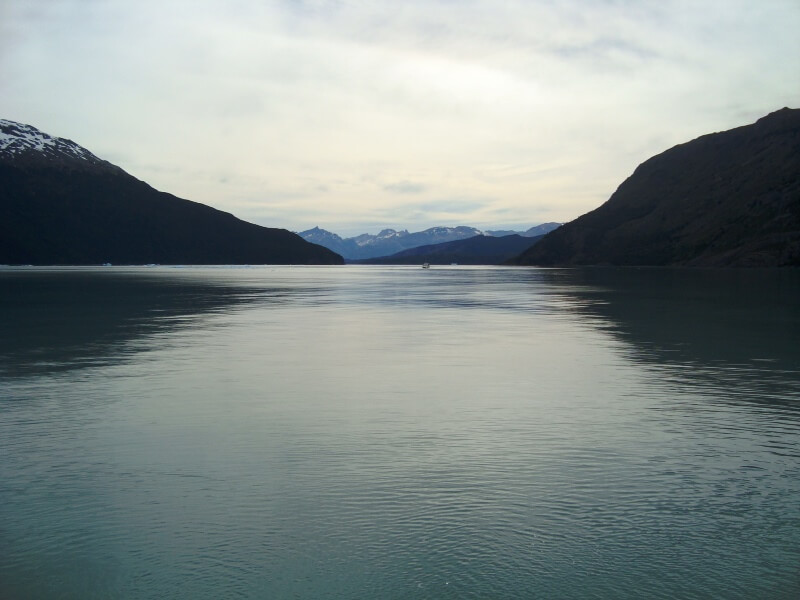

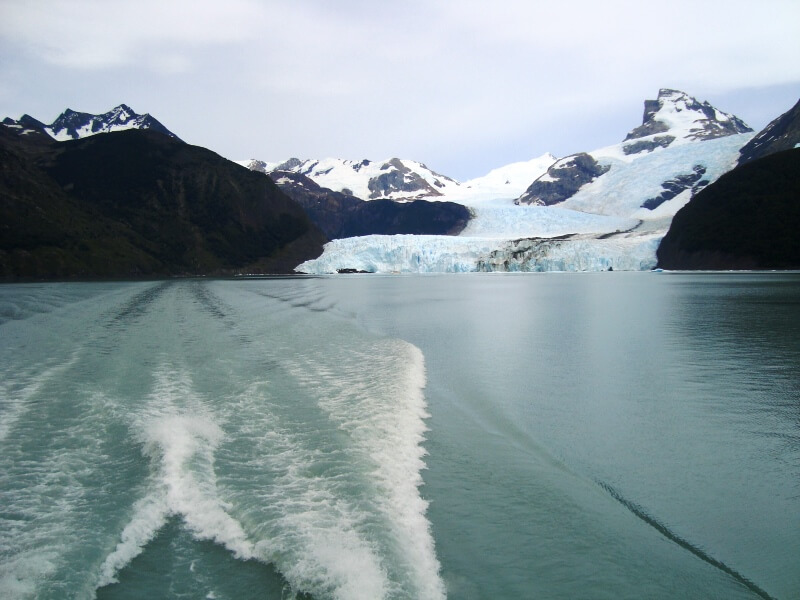
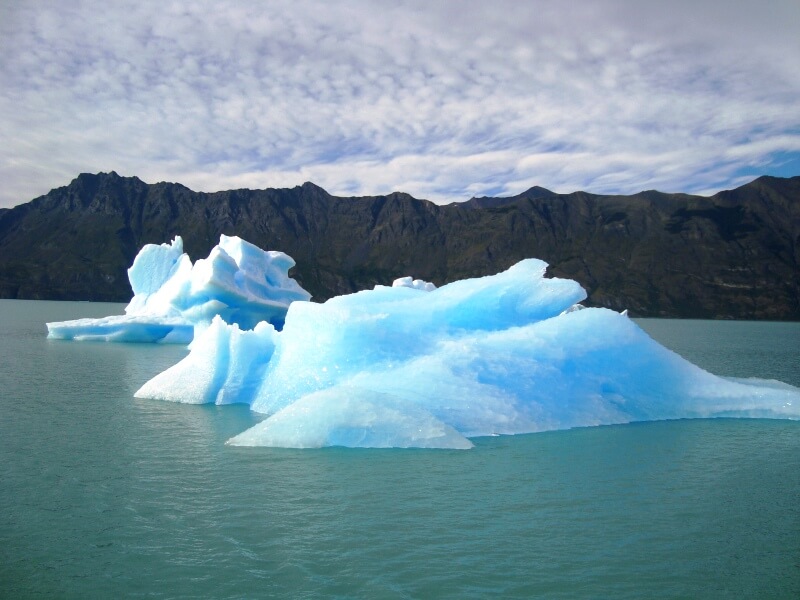
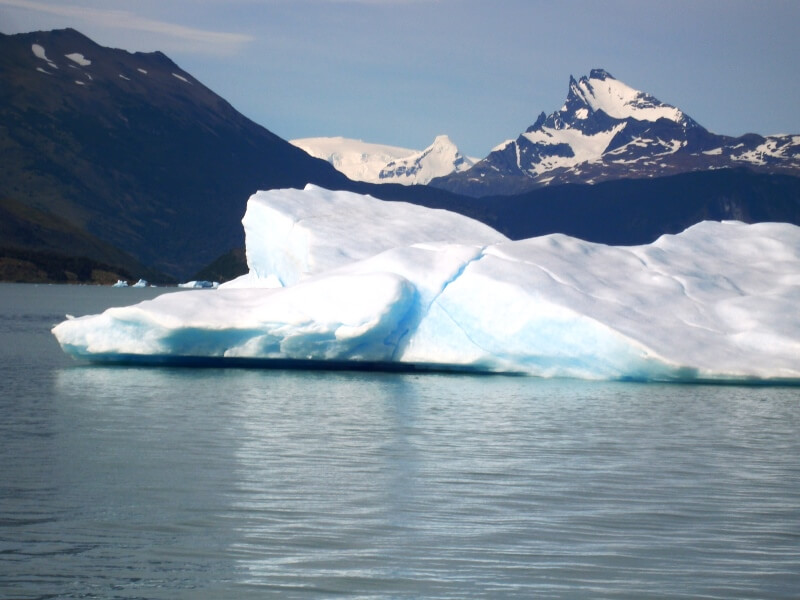
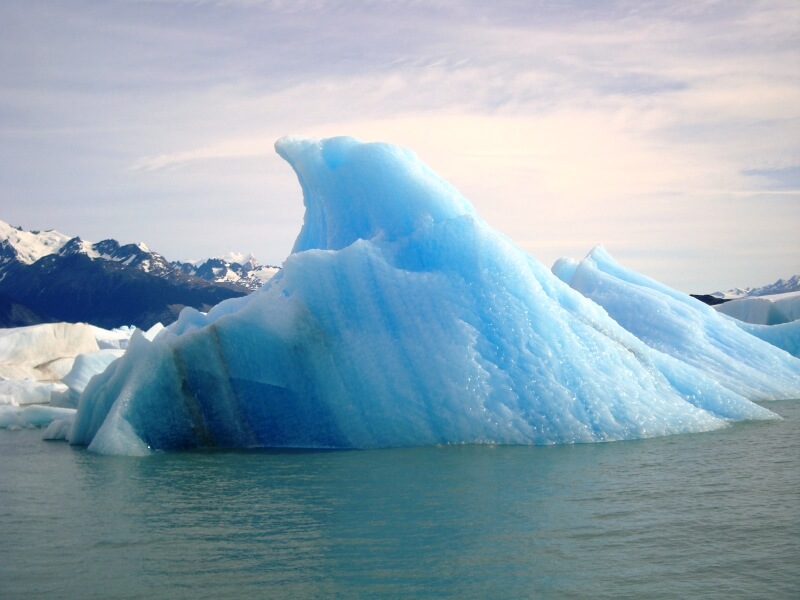
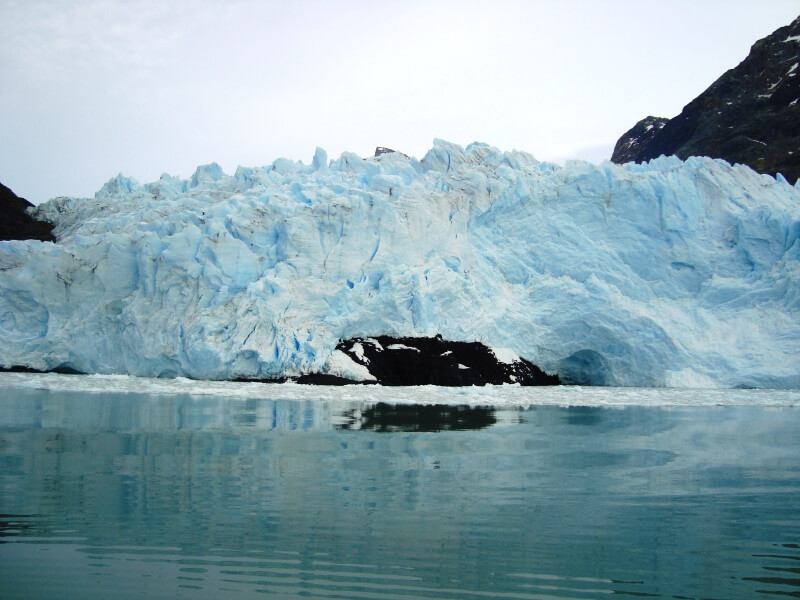
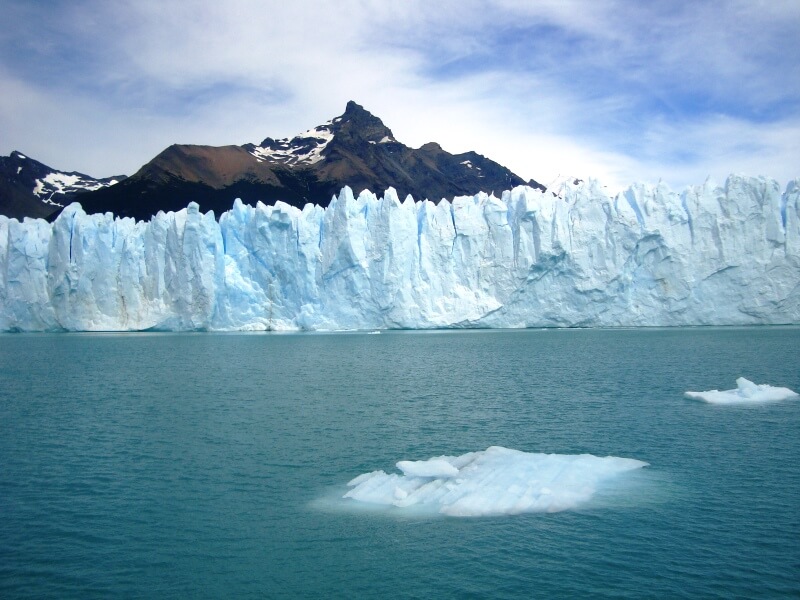


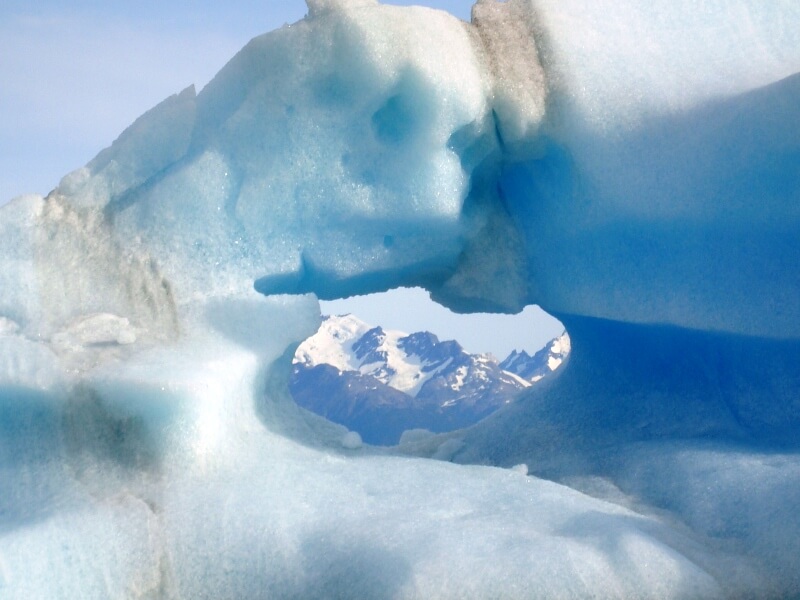

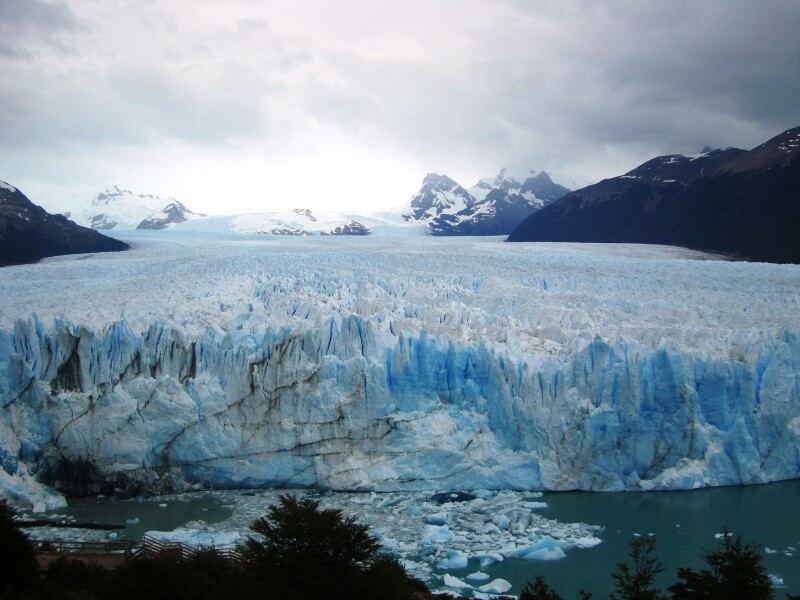
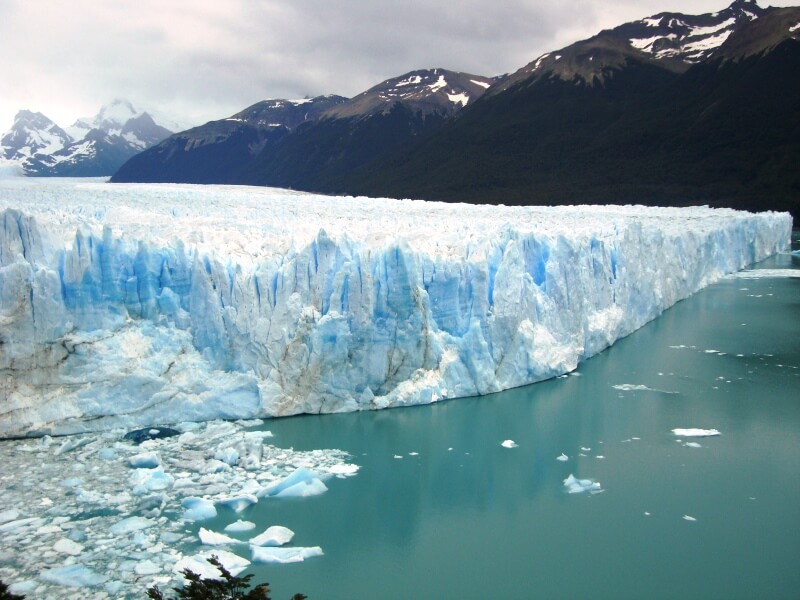
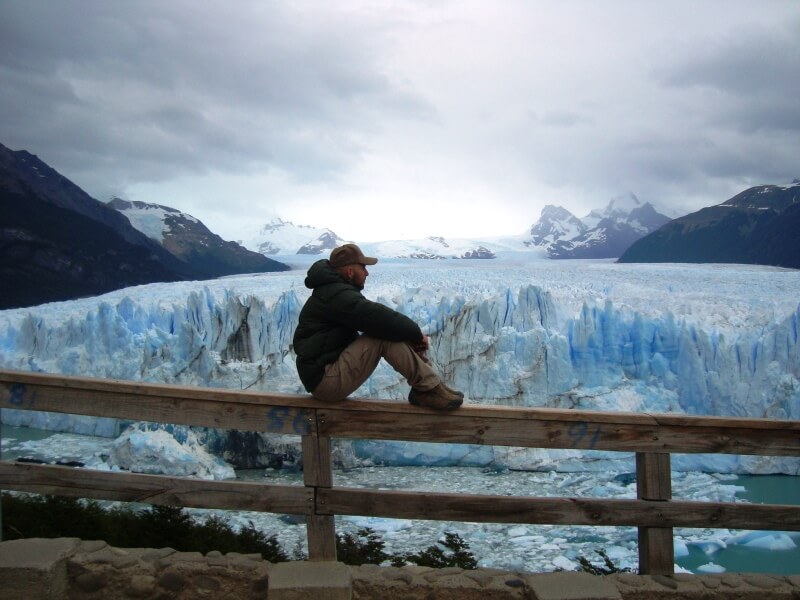
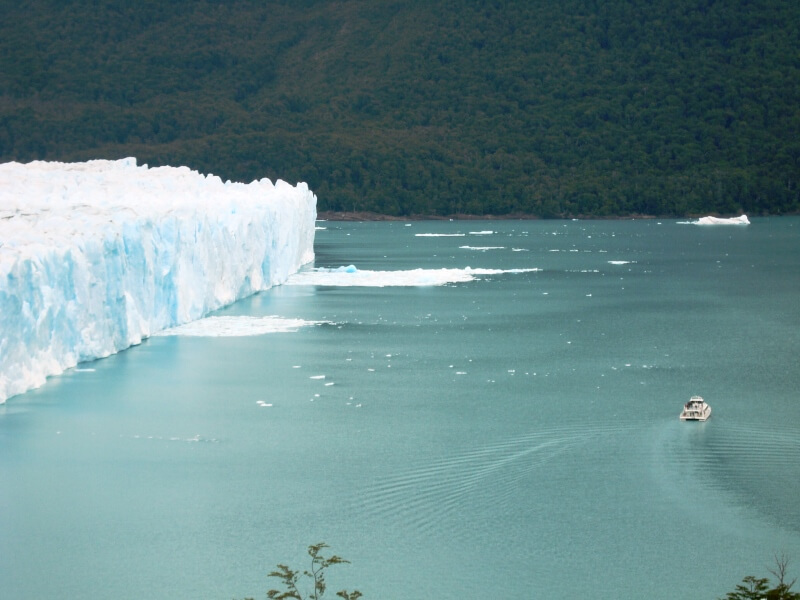
We spend a few more days discovering southern Chile before returning to Argentina again. After passing the Strait of Magellan, here is the wild Tierra del Fuego and Ushuaia, the southernmost city in the world, where you can walk through pristine forests and admire the colonies of penguins.
Welcome to the "end of the world", on the southern coast of the Big Island of Tierra del Fuego, three thousand kilometers from Buenos Aires.
Ushuaia is the southernmost city on the planet.
The spectacular scenery that welcomes visitors lives up to its name: the town stands on the Beagle Channel, closed behind by the Martial Mountains.
The first modern settlement was built in the second half of the nineteenth century by English missionaries, who settled in this area already populated for millennia by the indigenous people of the Yamana. Ushuaia then became the seat of a penal colony, closed in 1947, and was then rebuilt by Italian immigrants who have left an imprint on the local culture: at the restaurant, alongside typical specialties such as centolla (a large and tasty crab), they can also find bagna cauda and bonet, typical of Piedmont.
The city is small and pleasant, but it attracts visitors above all for the naturalistic wonders of the area. Consider taking a boat ride to explore the Beagle Channel, which is dotted with islets, so you can see the penguin colonies up close.
Our catamaran plows the waters of the Beagle Channel….
A large black-white rock appears ... one end is populated by cormorants which, like in a large airport, land and take off continuously ...
The other rock, more clumsy and fun, was populated by seals and sea lions who, like in a large tavern, made a huge noise ...
They chased each other, taunted each other, argued, dived ... it was really fun to watch them ...
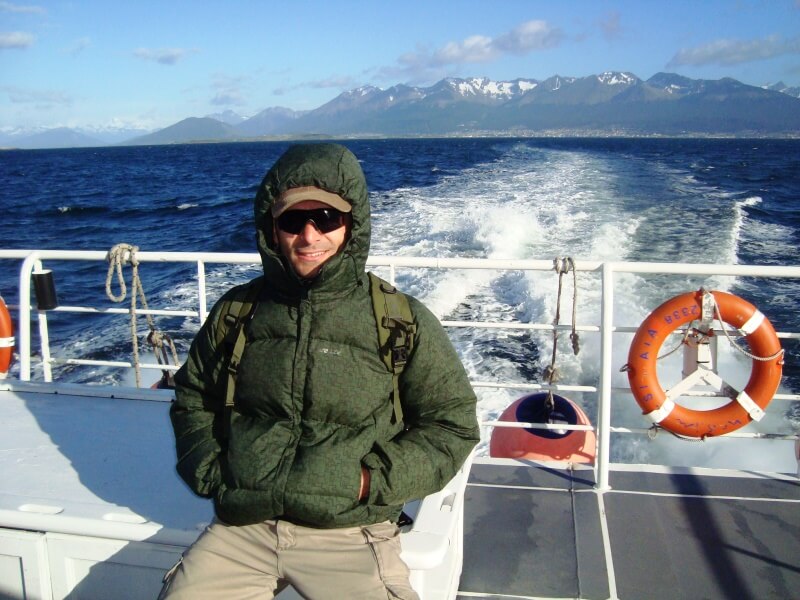

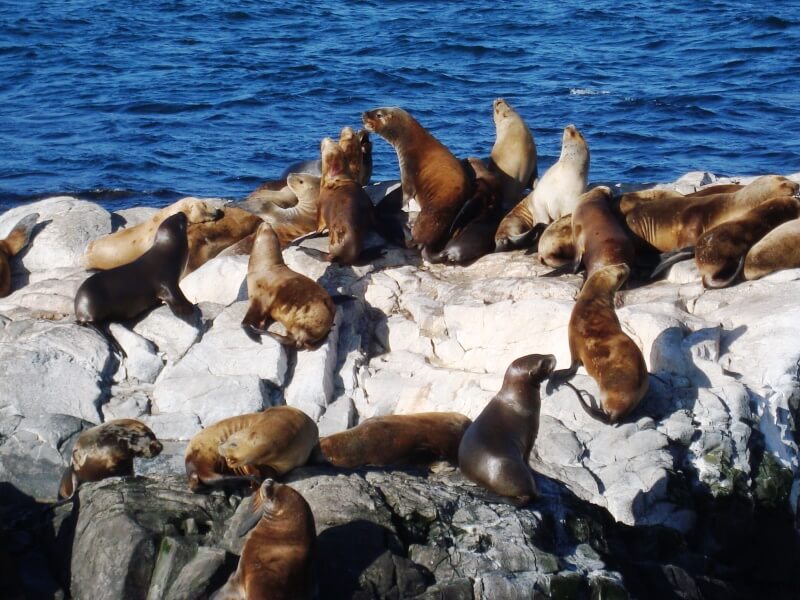
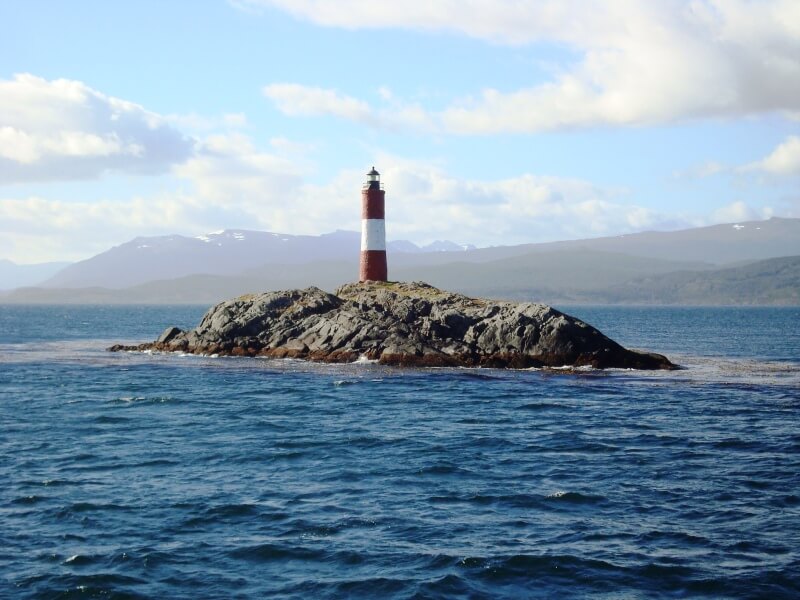
But the gem was the meeting we all expected the most: the penguins!
Two different species: the Magellan penguin and the Easter one ...
Those who jumped into the water and emerged a few moments later from a completely different place remembered the film "Mary Poppins", those who stood almost as if they were a statue doing who knows what, those who strolled placidly with that clumsy walk that only they have ...
All in impeccable tuxedos!
In the evening a wonderful cazuela de mariscos tasted at the "Casa de los Mariscos" cheered us up ...
The Tierra del Fuego National Park welcomed us with a light ray of sunshine and only after engulfing us with its dense vegetation did it dump all the water it could onto us ...
We didn't get down on it. Against wind, mud, slippery rocks, cold we completed our feat: eight km in almost three hours ...
It was enchanting to admire the trees that protected us from rainwater, the bushes that caressed us, the mud that clung to us, our footprints that marked our passage ...
I had never "experienced" nature under that deluge ...
In the afternoon, visit to the “Fin del mundo” museum which tells the story of this town on the edge of the world.
Its heroes, its founders, its discoverers, the old natives, its traditions and various anecdotes ...
The chat with the librarian of the museum about the Malvinas islands, better known with the name of Falkland, is interesting; although many years have passed since that Anglo-Argentine war, lost by the Hispanics, the latter continue to claim the right to belong to that strategic and rich island.
She was very sweet when she concluded her long speech by declaring: "Los inglesos? Para nosotros: Pirates! " (The British? For us: pirates!)
At the beginning of the 1900s, Argentina decided to confine some of its most uncomfortable inmates to the most distant and inaccessible place, a bit like the Russians with Siberia ... here was the Ushuaia prison!
The earth is finished! We are ready to take off for your capital!
In four hours of flight we retrace the entire journey of the last three weeks!
Buenos Aires is the place in Argentina where the European footprint is most evident. Cosmopolitan and exuberant city, more European than Latin American, it is renowned for the elegant and strong attitude of its inhabitants, which they retain even in the most difficult moments.
The city is divided into neighborhoods, the barrios, which are very numerous.
The obelisk of Plaza de la República is also a way to learn about the main historical facts of the city: each of its facades in fact recalls a salient event of the founding of Argentina.
Plaza de Mayo. The famous main square of the capital, famous for the manifestations of the mothers of the disappeared who, despite many years have passed, continue to meet there every Thursday evening and ask Argentina and the world: justice ...
I was impressed to see the scarves drawn on the ground, each representing the excruciating pain of a mother who for thirty years has been asking for news of her son or daughter. Opposite is the famous "Casa Rosada", the Argentine Quirinale, made famous by the charismatic Eva Peròn, so loved, still today, by the pueblo ...
The San Telmo neighborhood with its alleys, its colonial churches, its music that fills the air and its people reminded me a little of Havana ...
The yellow and blue, very colorful district of Boca, made famous by Diego Armando Maradona who kicked the ball here ... Here I must praise the Argentines who have managed to transform an infamous and dangerous area into a very characteristic and suggestive part for tourists , although the off-limits area remains, the one where not even the police "visit" ...
The so-called "bombonera" football stadium is a museum work because through its murals it tells you the story of the team and its people ...
Boca: a colorful agglomeration where Astor Piazzolla and his tango reigns in the air ... Many street artists, restaurants and postcards that will remain engraved in our minds, in our hearts and in our eyes.
Porto Madero, is the area in, the modern and rich one; inhabited by the sons of landowners, with impeccable and evergreen English parks, large cars and ladies with white poodles, skyscrapers and yachts.
How strange that only a crossroads separates it from the slums of Boca.
Palermo neighborhood. The elegant area of the embassies that show themselves to us in all their architectural splendor.
We end our interesting tour with a visit to the monumental cemetery, the one where they rest (some more and some less since people like the austere general Roca who exterminated the native Indians of the area are also buried here) and the beautiful Evita.
So let yourself be contaminated by its multi-ethnic identity, dance the tango, enjoy the best meat in the world or watch a football game.
In the country of Messi and Maradona, football is like a religion.
Error: No feed found.
Please go to the Instagram Feed settings page to create a feed.
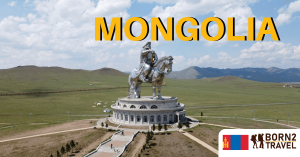
Mongolia Capitale:Ulan Bator Moneta:Tugrik Periodo migliore: Il periodo migliore per
2 Responses
Io c’ero che bello
E’ stato meraviglioso!!!!